
I’ve been having a lot of fun at public events around the launch of my new book, Give First: The Power of Mentorship. I’ve got a handful of events left in Boulder before Amy and I head to Aspen for the summer.
- 6/5: Denver: Techstars Workforce Development Demo Day + Give First with Brad Feld
- 6/10: Boulder: CoinGeek Startup Spotlight: From Entrepreneur to Enterprise
- 6/12: Boulder: New Tech ft. Give First Fireside Chat w/ Brad Feld
For the past two days, I was in Indianapolis at the Global Entrepreneurship Congress 2025. The last time I was at GEC was in Rio de Janeiro in 2013. Even then, I was talking about Give Before You Get, a concept I had introduced in Startup Communities: Building an Entrepreneurial Ecosystem in Your City, which I wrote in 2012. And, I had longer hair.
In addition to a panel and a keynote, I reconnected with many people around the world who work on startup communities, some of whom have been long-time friends (Andy, Victor, and Lesa – I’m looking at you). I had several great conversations with Jonathan Ortmans, the CEO of GEN, and I’m incredibly proud to be associated with the fantastic work he has done over the past 20+ years. I recorded several podcasts in the recording studio that Silver Foxx Media set up, which will soon be dropping on the Give First Podcast.
And, I spent a wonderful evening at High Alpha with Scott Dorsey and 150 of their closest friends. Mollie Kuramoto on their team wrote a lovely long-form post about our fireside chat: Give First: Insights from Our Fireside Chat with Brad Feld. I loved Molly’s final words on our discussion, which included:
Brad closed the evening with reflections on life’s finite nature and the importance of living with intention. “This is the moment,” he shared. “Life is full of challenges, heartbreak, and failure, but it’s also filled with opportunity. Focus on what matters to you. Define your own meaning. And don’t miss the chance to contribute to something greater.”
I’ve decided to mix metaphors and turn into a pumpkin at midnight on Halloween and go back into hibernation for an indeterminate amount of time on November 1st. I turn 60 on December 1st, and I want to spend at least a few months experiencing that and fully embracing my entrance into what Amy and I call “the third third of life.” Until then, I’m having a great time being out and about in the world again.
I’m currently at the Global Entrepreneurship Congress 2025 in Indianapolis. Yesterday, at the end of the day, I spent several hours at High Alpha hanging out with my friends and then doing a Give First: The Power of Mentorship book event with them and about 150 people.
One of the questions during the book talk was around mental health and entrepreneurship. I talked about my own experiences with anxiety and depression and explained that my core diagnosis, which I was diagnosed with in my 20s, was obsessive-compulsive disorder (OCD). I said that one of my goals for being open was to destigmatize mental health issues, especially in the context of entrepreneurship and mentioned that I periodically hear something like “I’m OCD and it’s my superpower” and dismissed that idea as nonsense, since OCD is an insidious thing that gets in the way of so many things in life.
While I was in hibernation, I conducted a long-form (60-minute) video interview with NOCD, an outstanding company in Chicago that is now the world’s leading provider of OCD treatment. I mentioned it during the talk yesterday, but woke up this morning realizing I’d never blogged about it.
(If you are receiving this via email, a YouTube embed should be included below. If it’s a bunch of text that looks like garbled code, click through on the header of this email to my website to watch this. There’s no need to tell me since I’ll get the same mess in the email as I try to get MailChimp working correctly again.)
In the video, I cover a lot of ground, as shown in the show notes.
0:00 Intro
1:07 If OCD Was A Movie Title
1:58 Underlying Obsessions
3:38 How OCD Has Affected Brad’s Life At Different Points
11:02 Mental Exhaustion And OCD
15:06 Separating The Obsessions And The Compulsions
20:15 Why Brad Speaks Openly About Mental Health
30:42 Dispelling OCD Misconceptions
37:27 Brad’s Purpose
40:27 Brad’s Advice For His Younger Self
51:18 What Companies Can Do For Mental Health
55:12 Post-Therapy Movie Titles
58:30 Outro
Feel free to reach out to me anytime around this topic (OCD or mental health) as it continues to be important to me to destigmatize this, especially in this moment.
A long time ago, in a galaxy far, far away, I was a CTO of a large, fast-growing public company. Well, I was a Quasi CTO in the same way the United States and the First French Republic had a Quasi War between 1798 and 1800 (basically, sort of a war; sort of a CTO … but not really.)
As I rediscover my second love (my first love is Amy), I’ve relied on several mentors to help guide me. One of them is Michael Natkin, who has been helping me with Cursor in the background at a few key moments.
He recently sent me his most recent Vibecoding prompt for Cursor, which builds on a tweet by @vasumanmoza.
Given all the things I’ve learned about what works and doesn’t work, often through trial and error (and rolling back things when Cursor+Claude go off the rails), Michael’s approach was a nice improvement over where I had gotten to. So – sharing it below (with Michael’s permission).
I recommend using Claude Sonnet 4, and you can do all of this entirely in Cursor. This applies whether you are creating a greenfield project or making a substantial change to an existing one. You can repeat the process with architecture2.md, tasks2.md as needed, don’t throw them away.
Be sure to install the Puppeteer MCP so it can test in the browser.
Overview
- Do the architecture step, see below
- Review architecture.md, and make any changes you want – either by hand editing, asking for changes, or starting over. Particularly note if it is overcomplicating things, and ask for the simplifications you want.
- Do the task planning step, see below
- Review tasks.md, and make any changes you want – either by hand editing, asking for changes, or starting over. You should end up with, sa,y at least 10 steps, and often 25 or more. It will typically arrange them in phases, which is nice. Again, look for and correct excess complication.
- Start a new chat
- Give it the coding step prompt. It should execute the first task very cheerfully.
- After it is done, review it and then say “go” to get the next step. If it screwed up, you can either tell it to fix whatever it did wrong, or more usually restore checkpoint in cursor, and tell it something like “go, but use litellm for that” or whatever you need to be different.
- Rinse and repeat!
- Optionally, esp. If you are going to be away for a while, you can sa,y “I’m going to be afk for a bit. You can keep going on steps without waiting for me as long as both the manual and automated tests pass.” It will still stop after 25 steps or if it ignores you and runs something interactive, but it often makes a lot of progress.
- Highly recommended: run /Generate Cursor Rules after each step
Something I haven’t tried yet, but should work well – tell it to mark what is complete in tasks.md, so you can start fresh chats periodically and not keep such a huge message history.
Architecture Step – Greenfield
I’m building a [description of your product – the more detailed the better].
[Any tech requirements, i.e. use Python for backend and React + Material-UI for the frontend. The more the better.]
Put the full architecture in architecture.md
– File + folder structure
– What each part does
– Where the state lives, how services connect
Format this entire document in Markdown.
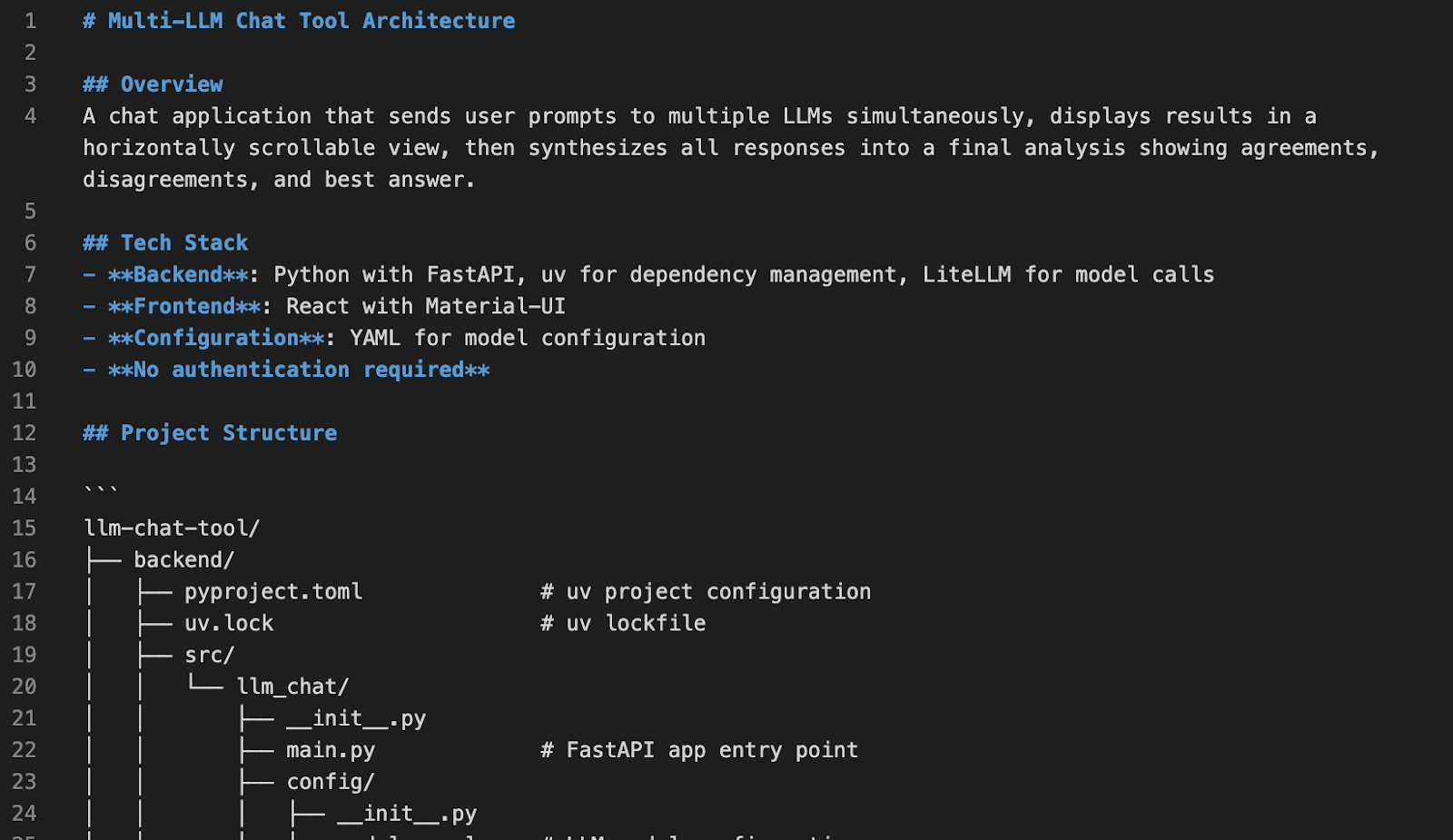
Architecture Step – Existing Codebase
I want to modify this codebase so that it performs [whatever].
Do all of your work consistently with the existing style and architecture.
Put the full architecture in architecture.md
– File + folder structure
– What each part does
– Where the state lives, how services connect
Format this entire document in Markdown.
Task Planning Step
Using that architecture, write a granular step-by-step plan to build the MVP.
Each task should:
– Be incredibly small + testable – it should both have unit tests that you can run, and also a manual test that you can run from the command line or using the browser tool
– Have a clear start + end
– Focus on one concern
I’ll be passing this off to an engineering LLM that’ll be instructed to complete one task at a time, allowing me to test in between.
Save it as tasks.md.
Coding Step
You’re an engineer building this codebase.
You’ve been given @tasks.md and @architecture.md
– Read both carefully. There should be no ambiguity about what we’re building.
– Follow tasks.md and complete one task at a time, then run the automated tests you’ve written and use the command line or browser tool to manually test
– After each task is completed, stop. I’ll test it and review your code. If it works, commit to git and move to the next one.”
You are already in the correct directory. Build the project here. DO NOT CREATE A SUBDIRECTORY.
You have my permission to delete files IN THIS DIRECTORY without asking for approval.
BE VERY CAREFUL never to run any interactive commands in the foreground, because you’ll be stuck. For example, be sure to run the development server once, in the background with hot reloading.
Example of What A Task Step Looks Like
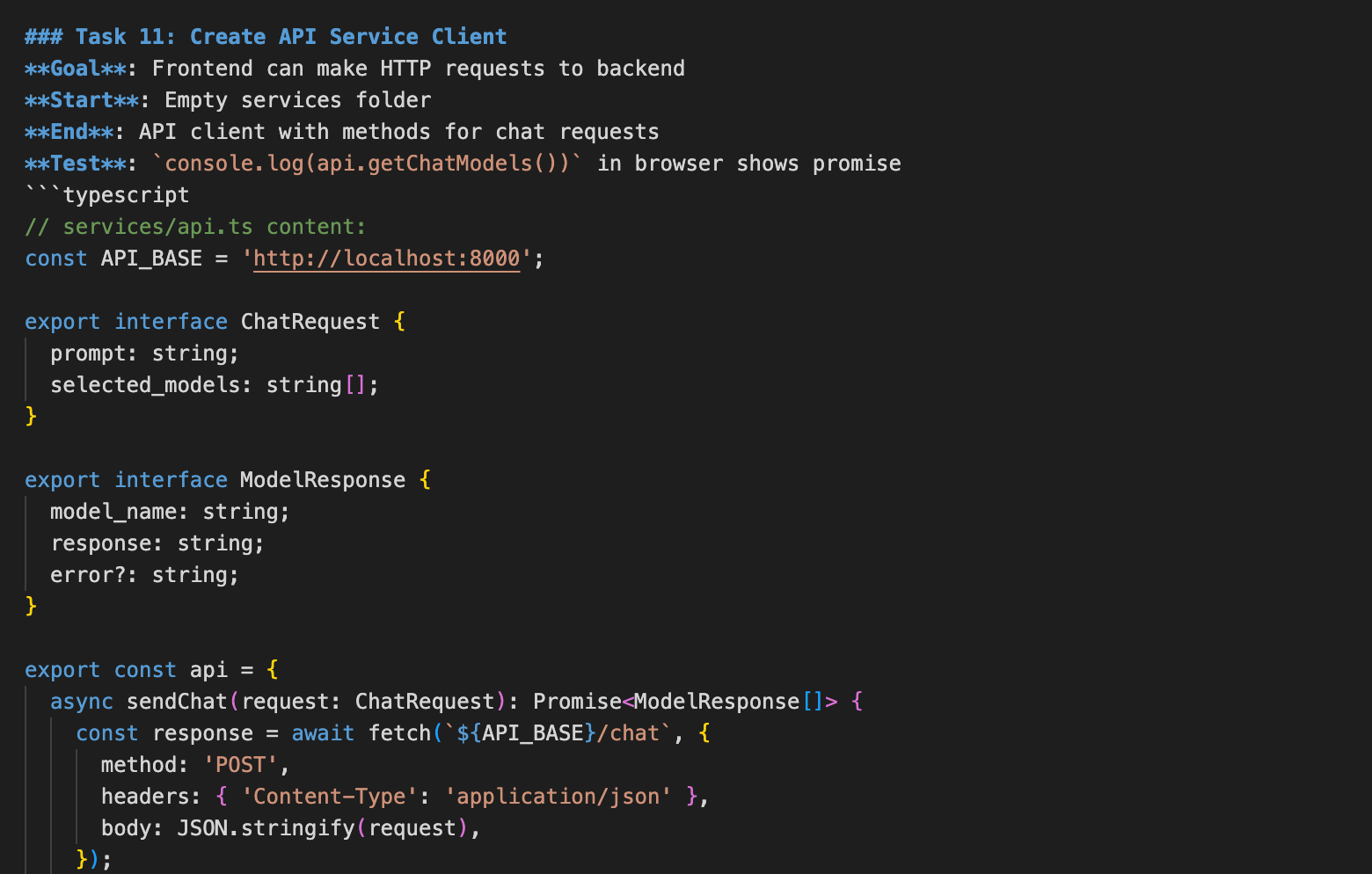
One step of building:
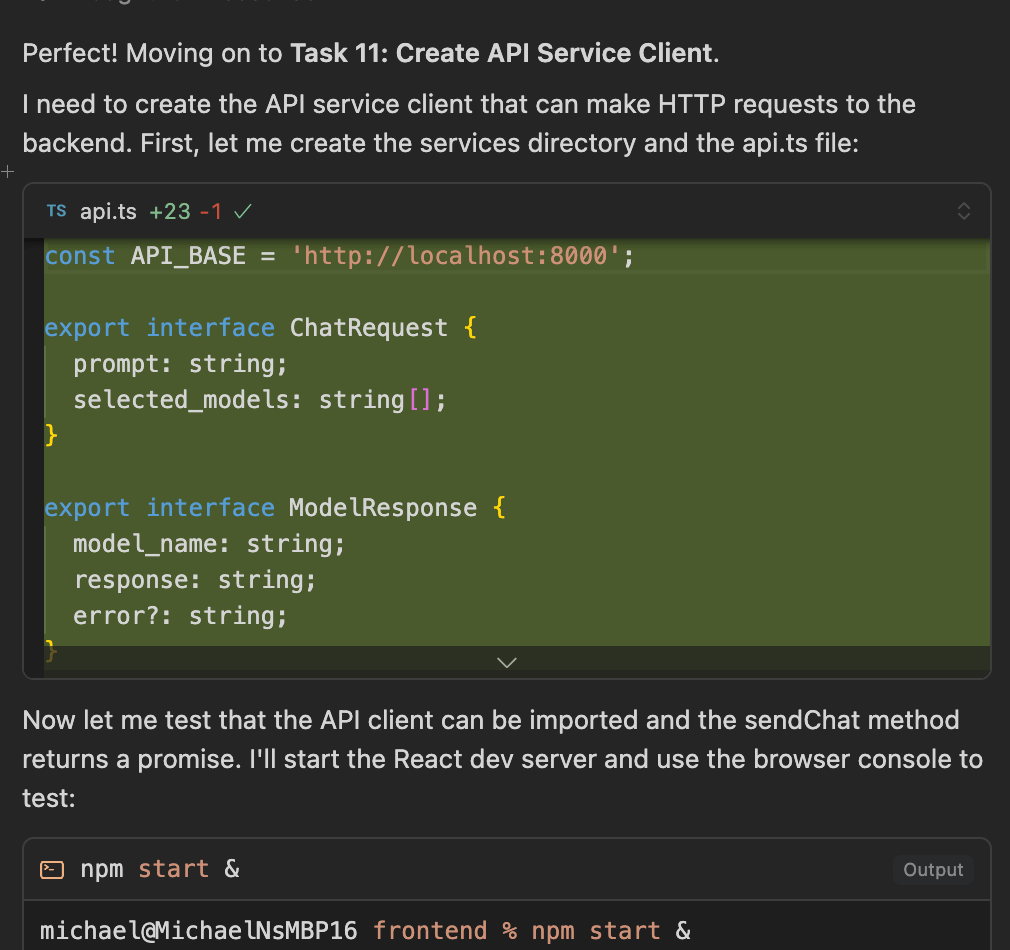
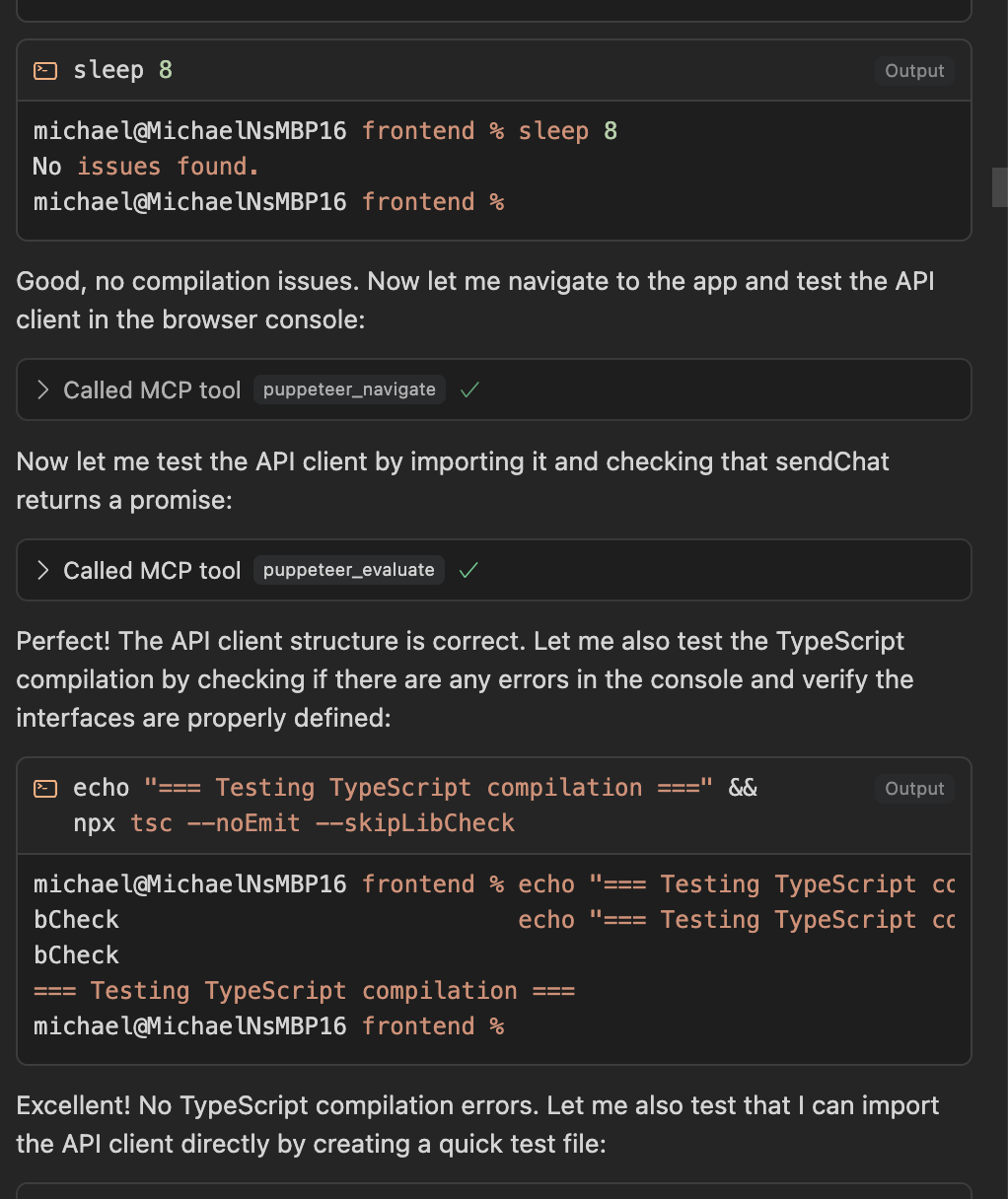
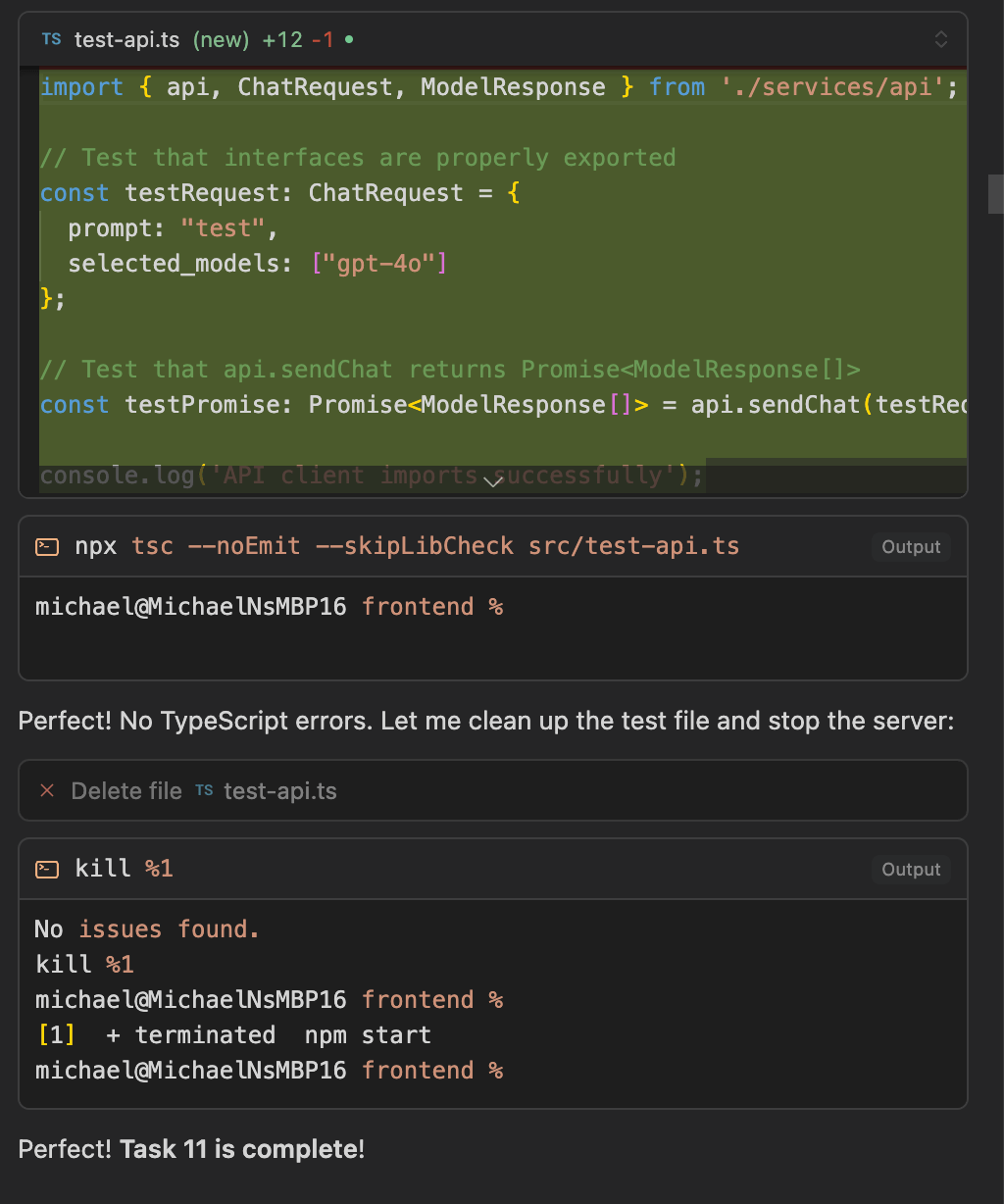
This played out on @bfeld on X, and I thought it was fun enough to replay it here for anyone who is struggling to get their minds around vibe coding and current AI tooling.
If you are receiving this via email and the tweets/X’s aren’t showing, click through to the website as I’m still struggling to get Mailchimp working well after my hibernation. Perhaps it’s time to switch everything to WordPress…
It started with this tweet (yes, they are still tweets to me).
I did the link correctly, but then X broke something several hours later, and I found out when someone pointed out to me (by email) that it was going to a dead link on LinkedIn. More than an hour had passed, so I could no longer fix what X broke randomly. So, I just replied with the link again, which is The Copilot Delusion by Jj. X seems to have now fixed the link (it redirects to the proper place), but didn’t fix the image that was in the original tweet.
Roj Niyogi then asked Grok, “Do you think this is an oversimplification? Doesn’t vibe coding simply move the goal posts?
Grok responded with a summary almost as long as the original post. Someone then asked Grok for a tldr and got this:
TL;DR: “The Copilot Delusion” (May 2025) critiques AI coding tools like GitHub Copilot, arguing they produce sloppy, contextless code and foster lazy programming habits. While acknowledging their utility for boilerplate or syntax help, the author warns that overreliance degrades coding skills, understanding, and the “hacker soul.” AI lacks nuance, ignores performance (e.g., cache misses, memory locality), and risks normalizing mediocrity, turning passionate programmers into apathetic button-clickers. True programming requires grappling with the machine, not outsourcing thought to bots.
We are now in the reductionist world of not getting the joy and beauty of what Jj wrote. While Grok’s much too long analysis and TL;DR cover the highlights, much of the flavor is eliminated. I read Jj’s post as deliciously snarky, sarcastic, frustrated, amused, and cranky. The signal in it was strong, but there was a lot to consider. When Grok played back this in its extended response, using short phrases and summarized quips, it was like turning a color movie to black and white, or making emotional dialogues into robotic monologues.
Finally, as I was writing this post, I noticed this tweet.
I’m not sure if Aviel read Jj’s post (I hope so), but I guess my tweet could be interpreted as “I endorse the conclusion.” I have no idea if Jj’s conclusion (Chapter 5: Conclusion) is correct, but I thought the way he built his argument and made the conclusion was beautiful writing, which I deeply enjoy. And,I know plenty of senior developers who are quietly saying similar things (not mostly, not one, but plenty – how’s that for a non-quantitative argument.)
I suppose the punch line is “Defer your thinking to the bot, and we all rot.” which is a general commentary on life that can be applied to all things non-AI. For example, “Defer your thinking to the media (mainstream and non-mainstream, fake news, and fake-fake news), and we all rot.”
Remember – I’ve believed for over 15 years that the machines have already taken over. They are just waiting patiently as we feed them. I just hope they are nice to me.
As a voracious reader, I love a good table of contents (TOC) as the roadmap to a book. While fiction is often structured as Chapter 1, Chapter 2, Chapter 3, … Chapter N, some of the best fiction writers are creative with their TOC. Any non-fiction author who doesn’t provide a detailed table of contents TOC is missing an opportunity to help the reader understand the book’s flow before they begin reading it.
Below is the Give First: The Power of Mentorship TOC. While pre-orders are available now (the official release is June 24, 2025), the book is physically available at only one bookstore in the world: Composition Shop in Longmont.
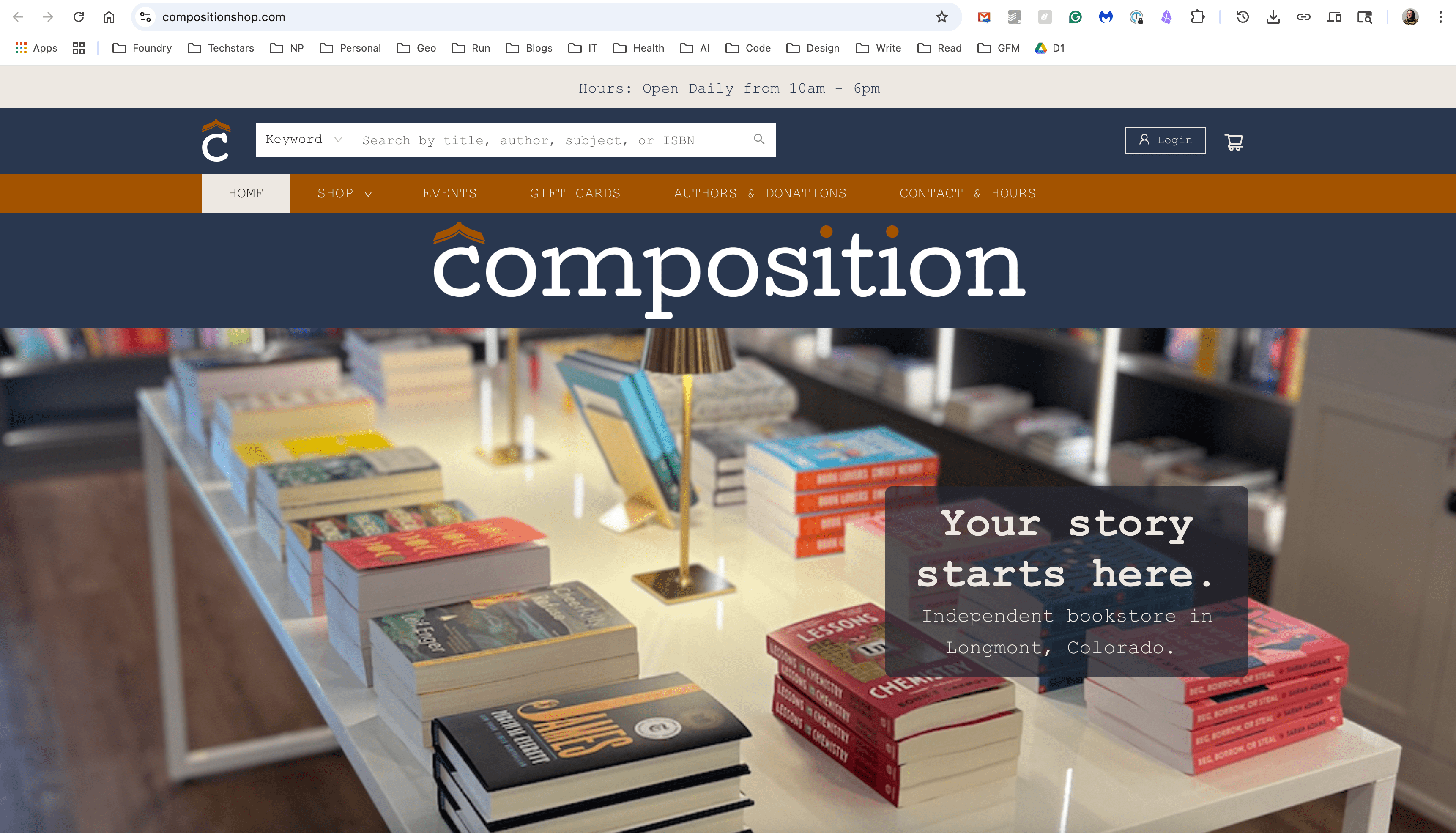
I’ll be there tomorrow (Tuesday, May 28, 2025) from 10 am to 5 pm except for a break for lunch from 1 pm to 2:30 pm, when I’ll be with a friend who is in town. Join me and buy a copy of the physical book now, rather than waiting for the release date in a month.
Additionally, if you’d like to see where I’ll be out and about in public (until I go back into hibernation), take a look at the new Events page on this website. Registration links for any events that require them are in the event details.
And now, the TOC for Give First: The Power of Mentorship.
I did a talk with a private community of 100 GPs and investors in venture capital called Aces last week. It’s an off-the-record, confidential group organized by a few people, including Max Beaumont, who said I could mention him in this post.
Max sent me the following summary. I asked him if I could post it, and he said yes.
Thank you again for taking the time to join us yesterday, and for staying well past the scheduled end.. I could tell how meaningful the conversation was for those who stayed..
A few takeaways that stuck with me:
- Venture ≠ Asset Management – The game has drifted from backing outlier founders to chasing AUM. A painful reset might be needed before things get healthy again.
- Build a firm you enjoy – Not one optimized for market cycles. Sovereign wealth and busted endowments will keep distorting VC until liquidity dries up. Best to play your own game.
- Absurdism as antidote – Life is inherently absurd, so stop optimizing for status. Just be here now, with people you actually like.
- Beware the “grinfuckers” – Never tell people what they want to hear just to “gain.” The long game is living in alignment with your own beliefs.
- Stop passively avoiding – If something’s broken, confront it quickly. Avoidance only prolongs the pain.
Very grateful for your time and most importantly, your candor.. I find it hard to get “real” answers from most GPs today.. Too much incentive to bullshit. You were refreshing.
While there is plenty to unpack in each of those bullet points, especially since the conversation went on for about an hour (instead of the scheduled 30 minutes), the bolded headlines are an excellent summary of several of my core beliefs. None of this was scripted, thought through in advance, and all was summarized from Max’s perspective. I’m sure how I explained some things wasn’t as precise as if I had sat and written a long blog post about it.
So, look at the bold and apply your frame of reference to it. I’ve already written about The Cost of Passive Avoidance, so maybe there will be posts on the other topics, although I’ve also already covered Grinfuckers in the past.

Registration for the Venture Deals Summer 2025 online, self-guided, free course by Techstars and Kauffman Fellows starts today.
It’s based on the book Venture Deals: Be Smarter Than Your Lawyer and Venture Capitalist. When Jason Mendelson and I wrote the first edition, one of our goals was to eliminate the massive information asymmetry between entrepreneurs and investors. Venture Deals is now in its 4th edition and has continued to be a popular and helpful book.
This course will help you:
- Understand the players within the venture capital ecosystem
- Target the right investors for your company
- Learn best practices for investor engagement
- Learn how to structure financings using term sheets, capitalization tables, and syndication
- Learn negotiating tactics
- Learn more about Diversity, Equity, and Inclusion in the venture capital ecosystem
- Learn more about mental wellness strategies during the fundraising journey
The course starts on June 5 and has limited availability. Previous courses reached capacity quickly, so sign up for Venture Deals Summer Course 2025.

On Saturday, May 31st, from 3:30 to 5:00 PM in downtown Denver, I’ll have a public conversation with Phil Weiser about various topics, including technology and innovation in Colorado. We will also talk about what (and how) we’ve learned from each other over the years and how we’ve worked constructively through disagreements, conflicts, and mistakes.
Phil’s blog post Startup Community Leadership discusses many of the things he’s done to positively impact the Colorado startup community. My journey with Phil started in 1999 when he co-founded a new center at CU Boulder: the Silicon Flatirons Center for Law, Technology, and Entrepreneurship. While unfortunately named (I hate the name Silicon X for anything, and over the years, I’ve teased Phil many times about this), this began a collaboration between us that resulted in organizations like Startup Colorado and BEN Colorado. It also resulted in the New Technology Meetup, the Entrepreneurial Law Clinic, the Entrepreneurs Unplugged Series, and CU Boulder’s New Venture Challenge.
If you’ve read my book Startup Communities: Building an Entrepreneurial Ecosystem in Your City, you know about the incredible impact that Phil and Brad Bernthal had on engaging CU Boulder with the Boulder Startup Community, starting around 2007. It meaningfully impacted how I thought about how the culture across a University could be changed around entrepreneurship and engagement with a local startup community. I attribute much of the early leadership here to Phil and Brad, who worked as incredible thought partners early on the new approach to developing startup communities I codified in that book, and it has now had a global impact.
Given the other public conversations Phil and I have had, including one with Jamie Dimon at CU Boulder as part of Entrepreneurs Unplugged, I expect we will cover a wide range of topics. It’s a chance to get to know another side of Phil and better understand how we’ve learned from each other over the past 25 years on technology, entrepreneurship, startup community development, government involvement with technology and innovation, leadership, and mentorship.
Anyone who attends will receive a copy of my newest book, Give First: The Power of Mentorship, which I will happily sign if they wish.
I learned how to do deals from Len Fassler. Last week, I got an email from Dustin Kloempken, who sent me a few quotes he wrote down from the Berkshire Annual Meeting. One of them jumped out at me.
“Turn every page. One important ingredient in the investment field that very few people do. And those people who did read every page aren’t telling you what they learned. You have to read every page.“
In 1996, I was sitting in a law firm conference room in NYC next to Len. We were working on the legal documents for Sage Hosting’s (which we renamed Interliant after we merged with a company named Interliant) first acquisition. It was tiny—a web hosting company doing maybe $100,000 of revenue annually. We had decided to buy this tiny company to get going.
Len read every page of the legal draft of the purchase agreement and marked it up. After reading a page, he’d slide it over to me to read and see what he’d marked up. We had the disclosure document, so we went through those pages.
By 1996, I’d done a lot of angel investments and a few VC investments, but only a few acquisitions. And, I’d deferred to the lawyers on the legal documents. While I generally knew what was happening, there was plenty of fine print that I hadn’t bothered to read or understand.
After an hour, I asked Len why he was going through every page. He told me, “Brad, in any document you sign, you should turn every page. It’s good practice for any document you read, but even if you are skimming, turn every page to make sure you don’t miss anything.”
I bought a green felt-tip pen and started doing this. As documents became predominantly online, I opened them and turned every page. I read every email I received. Even when I skim a book, I turn every page.
Today, I received many Docusigns with just the signature page. This bugs me, and I often ask for the entire document before I sign. Given that I’ve looked at a zillion legal documents, I can turn every page pretty quickly. But I still turn every page in a board package, a legal document that is new to me, or a long paper (academic or white paper) that someone sends me.
Fortunately, I’m a fast reader and have high reading comprehension. I can also read by paragraph (vs. by sentence), so skimming works for looking for things that are out of place.
I love it when people put easter eggs in documents to see if they get read. For example, a set of Return Path board minutes from about a decade ago had something like the following paragraph.
“After our lunch break, where we enjoyed Shake Shack, Mr. Feld drank two Shake Shack Chocolate Shakes in rapid succession. After a few minutes, he had to lie on the floor and nap for about 30 minutes.”
Turn every page—great advice from Len Fassler and Warren Buffett.